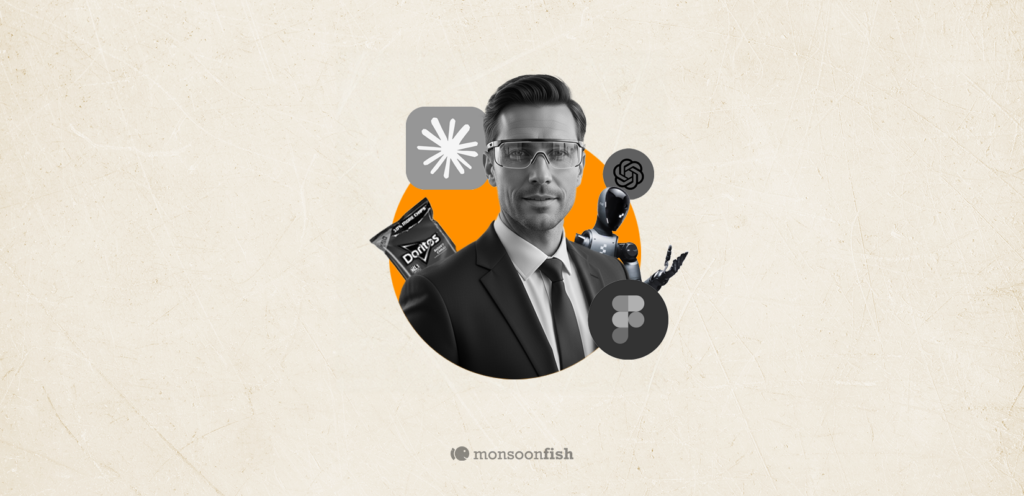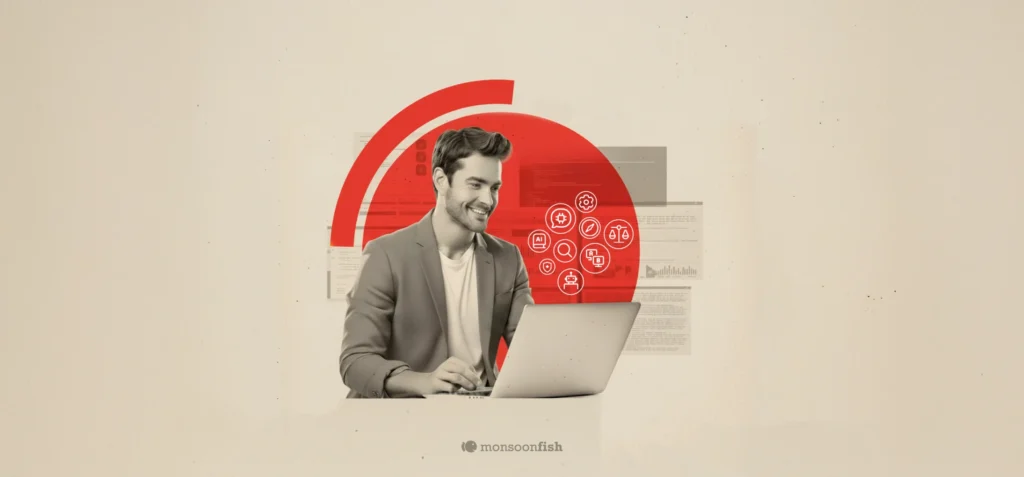Design Thinking in Healthcare: Transforming Patient Experiences
A 2022 study by The Institute for Healthcare Improvement (IHI) found that healthcare organizations applying design thinking saw a 28% increase in patient engagement and a 22% reduction in readmission rates. This underscores the value of a human-centered approach that effectively addresses patient needs and enhances overall healthcare delivery.
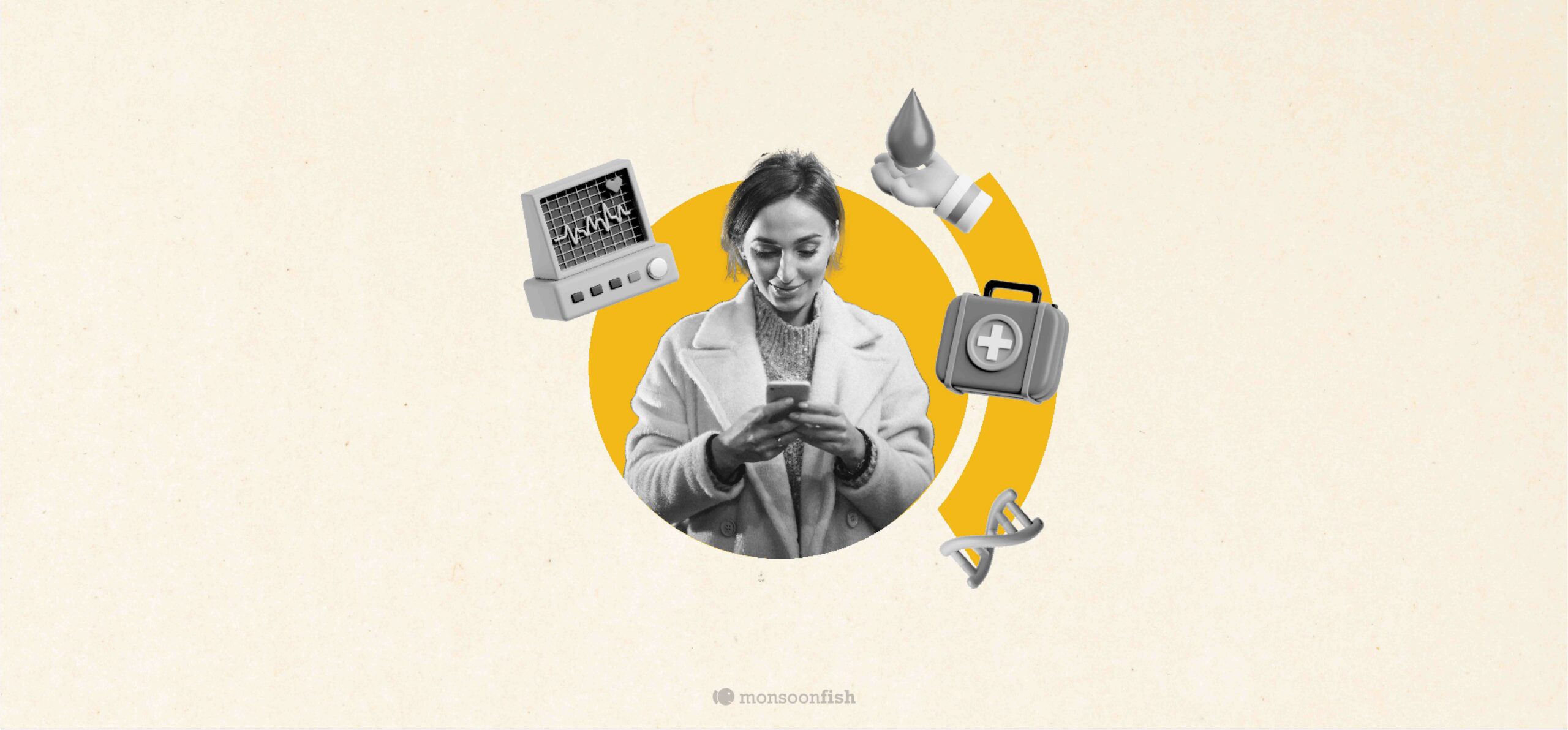
CONTENTS
What is Design Thinking in Healthcare?Why Does Healthcare Need Design Thinking?Fundamental Elements of Design Thinking in HealthcareBenefits and ROI of Design Thinking in Healthcare UX DesignWhat is the Return on Investment in Design Thinking for Healthcare Products?Monsoonfish, Your Partner in Healthcare UX Design for Better Business OutcomesSocial Share
CATEGORIES
Design thinking revolutionizes healthcare by emphasizing empathy, creativity, and collaboration. This user-centered approach redefines healthcare experiences, improving processes, services, and products. By integrating design thinking, healthcare can address key challenges such as chronic diseases, aging populations, and escalating costs through innovative and empathetic solutions, leading to better patient outcomes and more efficient operations.
What is Design Thinking in Healthcare?
Design thinking is a human-centered problem-solving approach that prioritizes empathy, creativity, and iterative testing. Rooted in design and engineering, it involves deep understanding, brainstorming innovative solutions, and testing in real-world settings. This method focuses on the user experience to ensure solutions are practical, feasible, and desirable.
In healthcare, design thinking is used to reimagine and enhance patient care, operational processes, and healthcare products. It requires a thorough understanding of the experiences and challenges faced by patients, caregivers, and healthcare providers. This approach helps pinpoint pain points, identify unmet needs, and develop solutions that improve patient outcomes and healthcare efficiency.
Why Does Healthcare Need Design Thinking?
The healthcare sector faces numerous challenges, including increasing patient demands, complex care-coordination, high operational costs, and the need for personalized care. Traditional problem-solving methods often fall short in addressing these multifaceted issues, leading to inefficiencies and suboptimal patient experiences.
Need for Innovative, User-Centered Solutions
Design thinking offers a fresh perspective by focusing on the end-users—patients and healthcare providers. It promotes a holistic view of healthcare delivery, ensuring that solutions are not only functional but also improve the overall patient experience. This user-centered approach leads to more effective and sustainable innovations.
Healthcare Design Trends to Watch in the Coming Three Years
Healthcare is evolving beyond traditional settings such as hospitals and clinics to include a wide array of phygital (physical + digital) services. This encompasses online consultations, healthcare apps, smart wearables, and e-medicine, which collectively shape the modern healthcare landscape. This shift is creating an omnichannel experience for both patients and healthcare professionals.
Over the next three years, key healthcare design trends will include the integration of AI and machine learning for personalized treatment plans, the expansion of telehealth services, and the creation of more intuitive, user-friendly health apps. These innovations will enhance patient engagement and streamline healthcare delivery. Design thinking plays a critical role in ensuring that these solutions are seamlessly integrated and inclusive, adapting to the rapidly changing healthcare environment to effectively meet the needs of all stakeholders.
Real-World Problems Solved by Design Thinking
- Patient Experience: Kaiser Permanente, for instance, used design thinking to improve nurse shift changes. This redesign led to smoother handovers and higher patient satisfaction.
- Chronic Disease Management: Design thinking has enhanced chronic disease management programs, such as those for diabetes. It ensures patients receive personalized care plans and easier access to resources.
- Healthcare Access: In India, the Aravind Eye Care System applied design thinking to create an efficient, low-cost model for cataract surgery. This approach significantly reduced blindness rates and made affordable care available to millions.
By addressing these and other challenges, design thinking helps create more efficient, empathetic, and innovative healthcare solutions, ultimately leading to better patient outcomes and more sustainable healthcare systems.
Fundamental Elements of Design Thinking in Healthcare
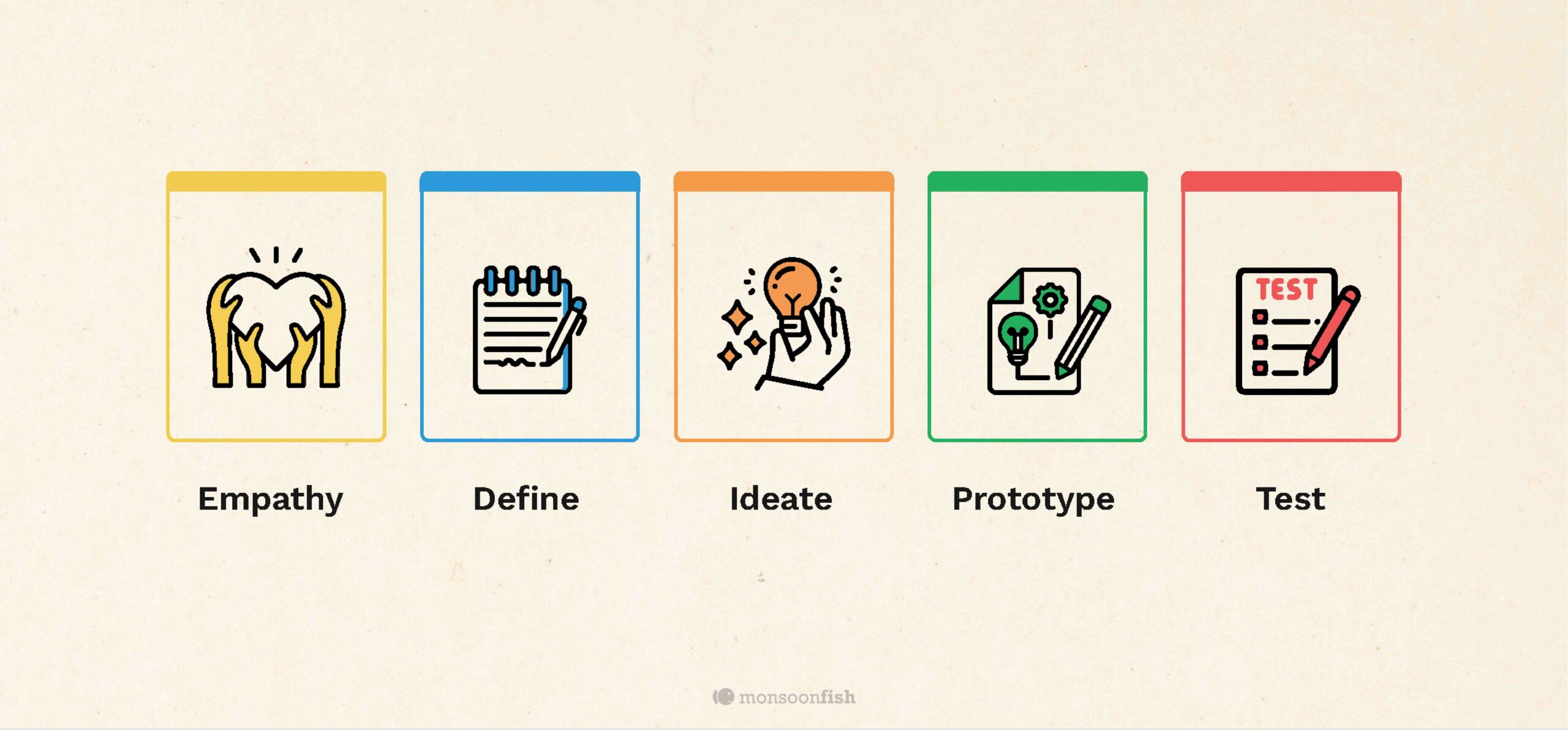
Design thinking is pivotal in revolutionizing healthcare by focusing on user-centered solutions. The core elements of the design thinking approach—empathy, definition, ideation, prototyping, and testing—are essential for creating impactful healthcare solutions.
Empathy: Empathy involves understanding the experiences of patients, caregivers, and healthcare professionals. By addressing their true needs and challenges, this approach ensures healthcare solutions are both meaningful and effective.
Define: The defining phase translates insights from empathy into clear, actionable problem statements. Accurate problem definition is crucial for targeting the right issues and enhancing project success rates.
Ideate: Ideation involves brainstorming diverse solutions to the identified problems. It promotes creativity and collaboration, leading to innovative approaches that address healthcare challenges effectively.
Prototype: Prototyping creates tangible models or simulations of solutions for hands-on testing and refinement. Regular prototyping increases the likelihood of developing practical and innovative healthcare solutions.
Test: Testing involves deploying prototypes in real-world settings to gather feedback and assess effectiveness. This iterative process is essential for refining solutions and ensuring they meet user needs.
Incorporating these elements ensures that design thinking in healthcare leads to solutions that are both innovative and aligned with real-world needs, ultimately improving patient care and operational efficiency.
Benefits and ROI of Design Thinking in Healthcare UX Design
Design thinking is a transformative approach in healthcare, offering significant advantages by focusing on user-centered solutions and innovative problem-solving. This methodology not only improves patient care but also drives substantial financial and operational benefits.
Improved Patient Experience and Satisfaction
Design thinking places patients at the core of the healthcare process, ensuring their needs and preferences drive solution development. This approach leads to more personalized, compassionate care experiences, resulting in higher patient satisfaction and engagement.Higher patient satisfaction and better adherence to treatment plans translate to improved health outcomes and reduced readmission rates, directly impacting financial performance.
Enhanced Efficiency and Effectiveness of Healthcare Services
Design thinking helps identify inefficiencies and reimagine workflows, resulting in more effective and timely care delivery. This simplification of processes reduces manual tasks, leading to fewer errors and more time for patient care. Streamlined operations and reduced administrative burdens lower operational costs, enhancing overall productivity and organizational efficiency.
Increased Engagement and Collaboration Among Healthcare Professionals
This methodology fosters collaboration across disciplines, breaking down silos and promoting the sharing of ideas and expertise to solve complex problems. Improved communication channels enhance collaboration among patients, providers, and insurers. Better collaboration and communication lead to more efficient healthcare delivery and reduced misunderstandings, promoting a more harmonious healthcare environment.
Development of Innovative Healthcare Solutions
Design thinking encourages creativity and experimentation, leading to novel solutions for pressing healthcare challenges. Prototyping and iterative testing ensure new ideas are tested and refined before broad implementation. Innovative solutions improve patient outcomes and operational efficiency, driving cost savings and better health outcomes.
Better Alignment of Healthcare Services with Patient Needs
By focusing on patient-specific needs, design thinking aligns healthcare services to improve care effectiveness and health outcomes. This alignment ensures services are tailored to meet the unique needs of each patient. Improved alignment with patient needs leads to better care coordination and increased patient engagement, enhancing the overall effectiveness of healthcare delivery.
Data-Driven Decisions
Effective UX design facilitates easy data collection and analysis, supporting data-driven decision-making. Integrating analytics tools provides insights into system performance and user behavior. Data-driven decisions optimize resource management and support continuous improvement, leading to better financial and operational outcomes.
Design thinking not only enhances patient experiences and operational efficiency but also drives significant financial benefits. By fostering collaboration, encouraging innovation, and aligning healthcare services with patient needs, design thinking is an essential strategy for modern healthcare systems aiming to maximize ROI and deliver high-quality care.
What is the Return on Investment in Design Thinking for Healthcare Products?
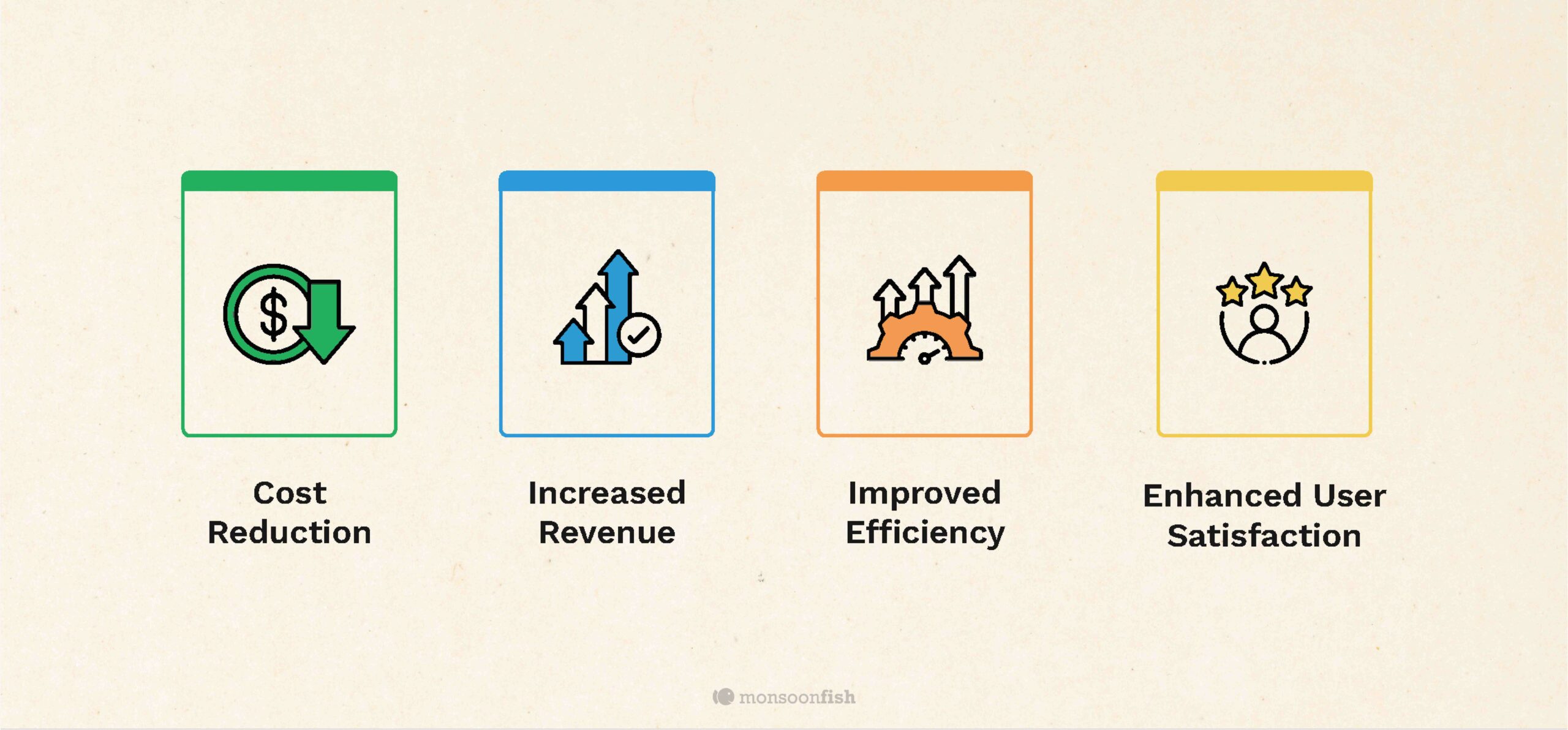
Investing in Design Thinking yields significant returns by improving financial and operational outcomes.
- Cost Reduction: Design Thinking can lead to substantial cost savings by streamlining processes and addressing inefficiencies. By focusing on user-centered design and optimizing workflows, organizations often find they can reduce waste and lower operational costs.
- Increased Revenue: Improved user experiences through Design Thinking can boost revenue by enhancing patient retention and expanding market reach. When healthcare solutions are tailored to user needs and preferences, they often lead to higher patient satisfaction and increased usage, contributing to revenue growth.
- Improved Efficiency: Design Thinking enhances operational efficiency by simplifying complex processes and reducing administrative burdens. By redesigning workflows and systems with a focus on usability, healthcare providers can minimize manual tasks, reduce wait times, and streamline overall operations.
- Enhanced User Satisfaction: Design Thinking prioritizes creating functional and enjoyable user experiences. By addressing the needs of both patients and healthcare providers, this approach ensures that healthcare solutions are not only effective but also pleasant to use, leading to improved satisfaction and better health outcomes.
Design Thinking in healthcare delivers a strong ROI by driving cost reductions, revenue growth, and user satisfaction. By prioritizing user needs and optimizing processes, it results in effective and efficient healthcare solutions, ultimately enhancing both patient care and organizational success.
Given the critical role of design thinking in transforming healthcare, partnering with the right design thinking agencies can make all the difference. These agencies bring expertise and innovative approaches that can help healthcare organizations navigate the complexities of the modern healthcare landscape and achieve their goals.
Monsoonfish, Your Partner in Healthcare UX Design for Better Business Outcomes
Design thinking revolutionizes patient care through enhanced clarity and accessibility, fostering transparency and stakeholder benefits. At Monsoonfish, we specialize in creating intuitive digital experiences tailored for healthcare. Our UX solutions prioritize accessibility and usability, ensuring high standards of system compliance and user satisfaction.
Transform your healthcare organization with exceptional UX design. Contact Monsoonfish to learn how our tailored healthcare UX services can enhance usability, increase patient satisfaction, and improve operational efficiency. Let’s work together to achieve your specific goals and drive meaningful change in healthcare.
CATEGORIES
